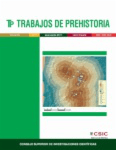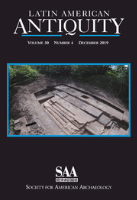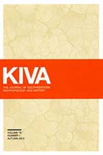
Intersecciones en Antropologia
Scope & Guideline
Unlocking the richness of human experience.
Introduction
Aims and Scopes
- Archaeological Research:
The journal emphasizes archaeological studies that reconstruct past human societies, including their lifestyles, technologies, and interactions with the environment. - Bioarchaeology:
A significant focus on bioarchaeological practices, particularly the analysis of human remains to understand health, diet, and social structures in historical populations. - Zooarchaeology and Taphonomy:
Research on animal remains, including their use and significance in ancient diets and cultural practices, as well as the processes of fossilization and preservation. - Material Culture Studies:
Investigations into the production and use of artifacts, such as pottery and lithic tools, which provide insights into technological practices and social interactions. - Environmental Archaeology:
Studies that explore the relationship between ancient human populations and their environments, including climate impacts, resource management, and ecological adaptations. - Interdisciplinary Approaches:
The journal promotes research that integrates methods and theories from various fields such as geology, biology, and chemistry to enrich archaeological narratives.
Trending and Emerging
- Indigenous Knowledge and Practices:
There is a growing emphasis on understanding indigenous practices, particularly in relation to resource management and cultural heritage, reflecting a broader recognition of indigenous perspectives in anthropology. - Interdisciplinary Integration:
An increasing trend towards integrating various scientific methods, such as isotopic analysis and geochemical studies, to provide deeper insights into archaeological findings. - Environmental Change and Adaptation:
Research focusing on how ancient populations adapted to environmental changes is gaining traction, highlighting the relevance of climate and ecological factors in shaping human history. - Mortuary Studies and Bioarchaeology:
There is a notable increase in studies examining burial practices, health, and genetic kinship within archaeological contexts, underscoring the importance of understanding social structures through death. - Technological Innovation in Archaeology:
An uptick in the use of advanced technologies, such as digital archaeology and data analysis techniques, is emerging, indicating a shift towards modernization in archaeological methodologies.
Declining or Waning
- Historical Archaeology:
There appears to be a decreasing focus on historical archaeology, particularly studies centered around colonial interactions and post-colonial contexts, suggesting a shift towards prehistoric research. - Experimental Archaeology:
Research involving direct experimental approaches to understanding ancient technologies and practices, while still present, has become less prevalent, indicating a potential narrowing of methodological diversity. - Social Anthropology:
Themes related to contemporary social anthropology, such as ethnographic studies of living communities, are less frequently addressed, perhaps reflecting a stronger emphasis on archaeological data. - Cultural Resource Management (CRM):
While still relevant, the scope of CRM studies within the journal has diminished, possibly due to changing regulations or research priorities towards more academic archaeological inquiries.
Similar Journals

ANTIQUITY
Connecting Scholars to the Legacy of HumanityANTIQUITY is a prestigious academic journal published by Cambridge University Press that has been at the forefront of archaeological and humanities scholarship since its inception in 1927. With its roots firmly planted in the United Kingdom, the journal has achieved remarkable recognition, maintaining a Q1 ranking in both the fields of Archaeology and Arts and Humanities as of 2023. With an impressive Scopus ranking of #3 out of 173 in General Arts and Humanities and #28 out of 354 in Archaeology, it underscores its significant impact and influence in shaping contemporary discourse in these domains. Although it is not an Open Access journal, ANTIQUITY provides crucial insights into the evolution of human societies through a comprehensive range of archaeological studies, reviews, and theoretical discussions. By facilitating knowledge exchange among researchers, professionals, and students, ANTIQUITY not only enriches academic literature but also fosters a deeper understanding of our past.

American Journal of Biological Anthropology
Exploring the Depths of Human DiversityThe American Journal of Biological Anthropology, published by WILEY, is a premier journal in the field of biological anthropology, boasting critical insights into human biological diversity, evolution, and adaptation. With its ISSN 2692-7691, this journal has established itself firmly within the research community, achieving a Q1 ranking in key disciplines such as Anatomy, Anthropology, Archeology, and Paleontology as of 2023. This indicates its significant impact, with Scopus rankings placing it in the top tiers across diverse fields, including a stellar rank of 13th out of 113 in Paleontology. Offering open access possibilities, the journal facilitates wider dissemination of groundbreaking research and is committed to advancing knowledge that intersects genetics, epidemiology, and anthropology. Based in the United States, the journal continually fosters an international dialogue among researchers, professionals, and students eager to explore the complexities of human biology through a robust and interdisciplinary lens.

Archaeological and Anthropological Sciences
Where Science Meets the HumanitiesArchaeological and Anthropological Sciences is an esteemed peer-reviewed journal published by Springer Heidelberg, specializing in the interdisciplinary fields of archaeology and anthropology. Since its inception in 2009, this journal has established itself as a pivotal resource for researchers and professionals, featuring cutting-edge studies that bridge the gap between the sciences and humanities. With its impressive 2023 Q1 rankings in Anthropology and Archaeology categories, the journal stands out in the Scopus landscape, ranking within the top 5% of its field—Rank #18/413 in Archaeology (Arts and Humanities) and Rank #28/502 in Anthropology. This is complemented by its commitment to disseminating high-quality research to a global audience, despite being a non-Open Access publication. The journal's scope encompasses innovative methodologies, archaeological findings, and anthropological insights that are vital for advancing knowledge and fostering academic discourse. As it moves toward its upcoming converged years, Archaeological and Anthropological Sciences continues to solidify its reputation as a key forum for scholarly exchange in these fields.

Archaeological Reports-London
Illuminating Our Heritage, One Report at a TimeArchaeological Reports-London, published by Cambridge University Press, is a prominent journal dedicated to advancing the field of archaeology, encompassing a comprehensive range of studies that delve into the rich tapestry of human history from prehistory to modern times. With an ISSN of 0570-6084 and an E-ISSN of 2041-4102, this journal has been a significant source of scholarly articles since its inception in 1955, serving as a crucial platform for researchers and academics alike. The journal is categorized in the third quartile for Archaeology and Arts and Humanities, and holds a prestigious position in the first quartile for Classics, reflecting its vital role in the scholarly community. With its esteemed ranking of Rank #45/170 in Classics and Rank #210/413 in Archaeology, it provides unparalleled insights and findings that shape contemporary archaeological discourse. Although not an open-access publication, the journal remains key for those who seek to enrich their understanding of archaeological practices and heritage conservation. Engage with Archaeological Reports-London to explore cutting-edge research that illuminates our understanding of past civilizations and informs future directions in the field.

Time & Mind-The Journal of Archaeology Consciousness and Culture
Exploring the Nexus of Culture and CognitionTime & Mind - The Journal of Archaeology Consciousness and Culture, published by Routledge Journals, Taylor & Francis Ltd, stands at the intersection of archaeology and consciousness studies, revealing the intricate relationship between cultural practices and human cognition. With a robust ISSN of 1751-696X and an E-ISSN of 1751-6978, this esteemed journal plays a vital role in fostering interdisciplinary dialogue among scholars in the realms of anthropology and archaeology. Notably recognized for its rigorous academic standards, it achieved a commendable Q2 category ranking across various fields in 2023, including Anthropology and Archeology, alongside impressive Scopus rankings. As it continues to publish cutting-edge research from 2008 to 2024, this journal remains dedicated to exploring the nuances of human experience through the lens of archaeological evidence, making it an indispensable resource for researchers, professionals, and students alike seeking to deepen their understanding of the cultural dimensions of consciousness.

ARCHAEOMETRY
Exploring the Material Culture of Our Ancestors.ARCHAEOMETRY, published by WILEY, is a premier journal that has established itself at the forefront of research in the fields of archaeology and history since its inception in 1958. With an impressive Q1 ranking in both Archaeology and History for 2023, and notable Scopus rankings placing it in the top 98th percentile for History and the 91st percentile for Archaeology, this journal is an invaluable resource for researchers and professionals dedicated to advancing knowledge in these disciplines. The journal's comprehensive scope addresses a wide array of topics related to the materials and techniques used in archaeological investigation, fostering interdisciplinary dialogue and collaboration. Though not an open access publication, its impactful content is meticulously curated to promote scholarly excellence and innovation. By bridging the gap between science and the humanities, ARCHAEOMETRY plays a crucial role in unraveling the complexities of human pasts, making it an essential addition to the libraries of scholars and students alike.

Trabajos de Prehistoria
Innovative Research at the Forefront of Prehistoric StudiesTrabajos de Prehistoria is a distinguished peer-reviewed journal published by the Consejo Superior de Investigaciones Científicas (CSIC) since 1988, and it has established itself as a vital resource in the field of archaeology and prehistory. With an impressive impact factor and an open access policy, the journal aims to disseminate high-quality research that contributes to the understanding of human history and prehistorical studies. This Spanish journal has consistently ranked in the top quartile (Q1) in both the Arts and Humanities and Social Sciences categories, reflecting its significance in advancing archaeological scholarship, with Scopus rankings placing it in the 85th percentile among its peers. Covering a broad scope of topics related to archaeology, it serves as a platform for innovative research that connects researchers, professionals, and students globally, enhancing academic dialogue and fostering interdisciplinary collaboration. Based in Madrid, European researchers and global academics alike benefit from its open access model, promoting wider distribution and accessibility of foundational studies in the field.

International Journal of Historical Archaeology
Unveiling the Past: Where History Meets ArchaeologyInternational Journal of Historical Archaeology, published by SPRINGER, stands at the forefront of archaeological scholarship, focusing on the intricate relationship between historical events and archaeological findings. With an impressive impact factor underscored by its ranking in the Q1 quartiles across various categories, including Archeology and History, this journal serves as a premier platform for researchers, professionals, and students alike to disseminate groundbreaking findings and theoretical advancements in the field. Although it is not an Open Access publication, the journal provides valuable insights through its rigorous peer-review process, enhancing the quality of contributions. Covering a breadth of topics from 1997 to 2024, it is vital for advancing knowledge in historical archaeology and offers an essential resource for those invested in understanding our shared past through the lens of material culture. The journal's commitment to fostering interdisciplinary discussions enriches the scholarly community and supports the evolution of methodologies and perspectives within the domain.

LATIN AMERICAN ANTIQUITY
Documenting the Echoes of Ancient Civilizations in Latin AmericaLATIN AMERICAN ANTIQUITY is a prestigious journal published by Cambridge University Press, focusing on the archaeology and history of Latin America. With an impressive impact factor reflecting its critical role in the academic community, this journal exemplifies excellence in research, landing in Q1 across multiple categories, including Archaeology and History, as per the 2023 category quartiles. The journal's scope covers a broad range of topics related to pre-Columbian cultures, ancient civilizations, and historical developments, making it essential reading for researchers, professionals, and students keen on exploring the rich tapestry of Latin American heritage. Although it is not an open-access publication, LATIN AMERICAN ANTIQUITY remains a vital resource for those dedicated to advancing knowledge in this dynamic field. With its commitment to scholarly rigor and a strong ranking in Scopus, it serves as a cornerstone for academic dialogue and investigation.

Kiva-Journal of Southwestern Anthropology and History
Illuminating the Intersection of Anthropology and HistoryKiva - Journal of Southwestern Anthropology and History is a distinguished academic journal published by Routledge Journals, Taylor & Francis Ltd, that serves as a vital resource for scholars in the fields of anthropology, archaeology, and history. With an ISSN of 0023-1940 and an E-ISSN of 2051-6177, this journal has established itself as a significant avenue for scholarly communication since its inception in 1964. It consistently ranks in the top quartiles, including Q1 in Archaeology and Q2 in Anthropology, reflecting its high impact and rigorous peer-review process. Covering a wide array of topics pertinent to the Southwestern United States, Kiva invites original research articles, reviews, and methodological papers that advance understanding of the region's rich cultural heritage and historical narratives. While currently not open access, its commitment to disseminating quality research makes it an essential reading for researchers, professionals, and students aiming to explore the multifaceted dimensions of southwestern studies.